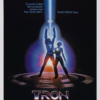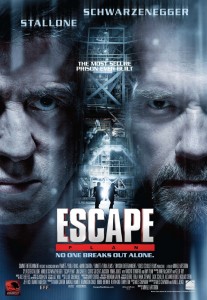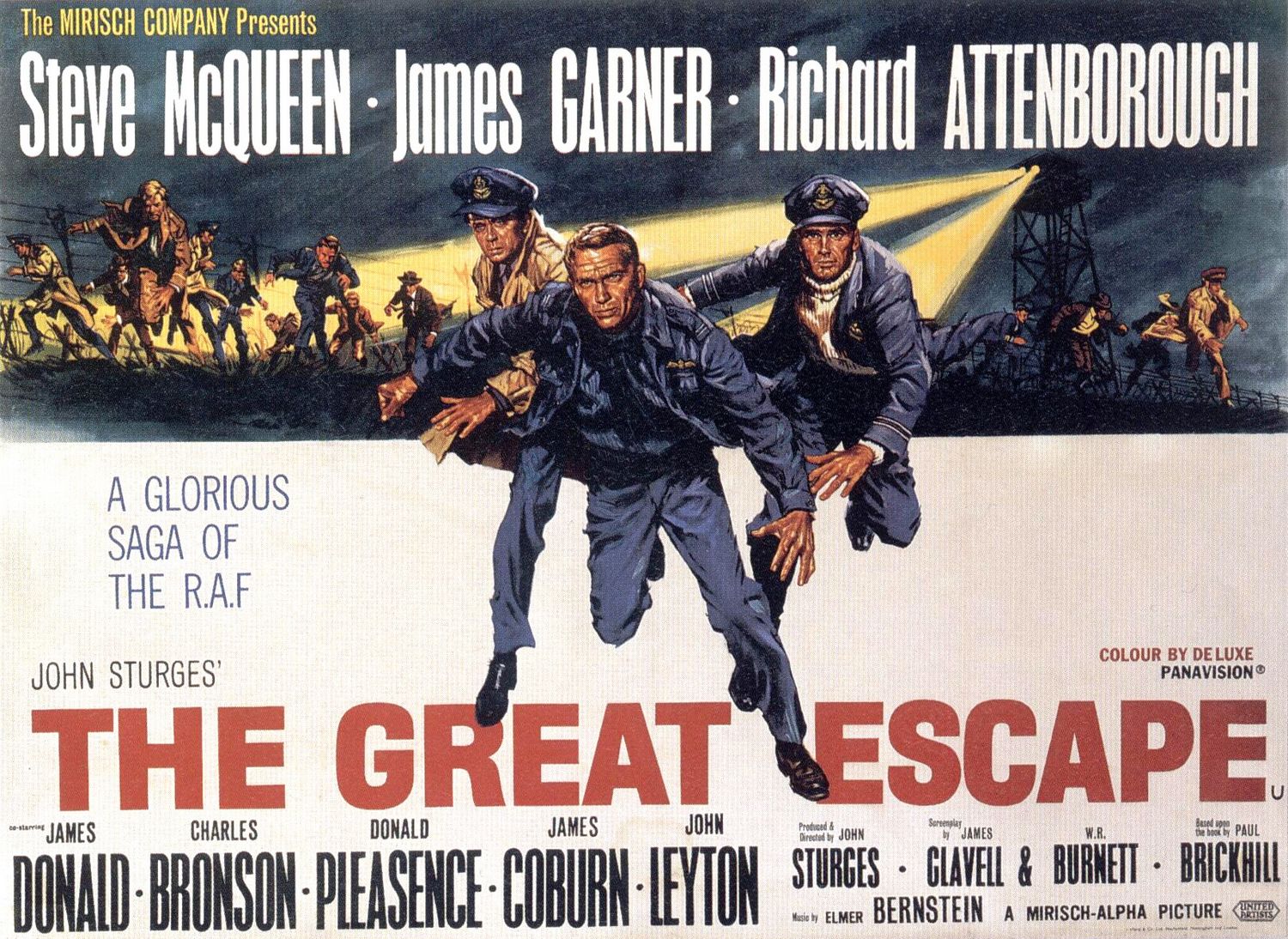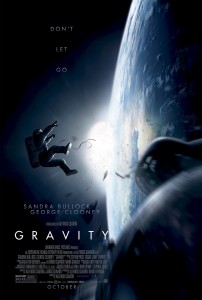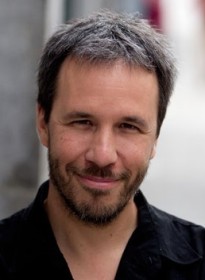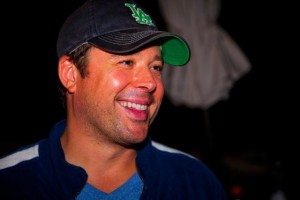Like any great character actor, you know you KNOW Leland Orser. From early television work in shows like “The Golden Girls,” “Cheers,” “L.A. Law” and “The X-Files” to roles in films like “Se7en,” “Saving Private Ryan” and “Pearl Harbor,” Orser has carved out an impressive notch in the Hollywood tree. Now he’s taking his considerable talents to the other side of the camera with his feature film writing and directing debut, “Morning.” Based on a short film he made in 2007, “Morning” stars Jeanne Tripplehorn (Orser’s real life wife) and Academy Award nominees Laura Linney and Elliot Gould and is scheduled to open in selected theatres on September 27.
To help spread the word about his new film, Mr. Orser took the time to talk with me about his new career move, the power of Steven Soderbergh and how dinner with Blake Edwards changed his life.
Mike Smith: “Morning” began as a short film which you’ve now expanded into a feature. Was that always your intention?
Leland Orser: It was never my intention. Even making the short was never an intention. It was just something that kind of happened. I went to the Sundance Institute a couple summers back. I went there as an actor and was very, very inspired by the experience. As I was flying back on Southwest this story just popped into my head and began telling itself to me. I asked the stewardess if she had anything to write on and she brought me a pile of airline cocktail napkins and I basically wrote out the (14) page treatment for the short film. When I got back to L.A. I showed it to some friends and they all said “let’s do this.” I shot the film in my own home and banged it out over a weekend. I came back from dropping all of the equipment off on a Monday – I had sent my wife and son to a hotel for two nights – I came back to a big, old empty house with everybody gone and realized I had no idea what to do next. All I had was a pile of Mini-DV tapes on the table in front of me. I had just finished working with Steven Soderbergh (NOTE: Mr. Orser appears in Soderbergh’s 2006 film “The Good German”)and I thought “well, he’ll know what to do.” (laughs) I picked up the phone and called his office. He had come in early and actually answered the phone himself and I said, “I just shot a short film and I don’t know what to do next.” He told me to keep the tapes away from anything warm and that I needed an editor. I told him I didn’t know any editors. He asked me where I was and I told him at home. He told me not to go anywhere. Fifteen minutes later my phone rang and it was one of his assistant editors. He said, “Steven told me to call you,” and I said, “Oh, cool. I just did this film.” He told me that he had a couple of weeks off between working on Steven’s films and came over. He ended up editing the short in the room above my garage. We took it out on the film festival circuit and had a very lovely time. It was very successful and we had a great run with it. When we returned I went and spoke with Michelle Satter, who runs the Sundance Institute for Robert Redford. She asked me what was next and I asked her what did she mean what next? What were my options? She said I could continue to tour the festival circuit and hang out with..discuss, socialize and collaborate with…other short film makers or you can use this as a calling card if you have any interest in continuing your career as a director. Or, she suggested, maybe this is a smaller part of a larger story that you want to tell. Boom! There it was. I told her that it was and she told me to go write it. And I did. Even when you’re telling a small story you need to know the big story around it. You need to know what happened before, during and after in the world you’re telling about. And you have all of those details in your mind as you’re writing the specifics of the tale you’re telling. So there it is. That’s what happened.
MS: You’ve been able to work with some great filmmakers – Steven Soderbergh, Steven Spielberg, David Fincher…did you have the opportunity to observe them at work once you realized you wanted to direct?
LO: I was doing the first part of that but not for the second part of that. I never really had aspirations or ever thought that I would want to or could do that. But I’ve always been fascinated with filmmaking and filmmakers. I’ve been so lucky to have worked with the ones I’ve worked with. I’m a question asker and an observer. You can learn a lot just by being on set as an actor. You can go back to your trailer and get on line or on the phone or you can stick around and watch…see what everybody else is doing. That’s always been my way.
MS: You’ve worked pretty steadily in both television and film. Do you have a preference as an actor?
LO: I really think the lines are blurring between the two. I think the great renaissance – the Golden Age of Film right now – is taking place on television. Filmmakers, film actors…everybody is doing something on the medium of television. And that medium is not necessarily TELEVISION anymore. It’s really the world of computers and iPads and Apple TV. I don’t have a preference. I go now where I’m wanted, for one. Where I’m asked to be. And I go where the good work is and the good people are. Sometimes you go to make money and sometimes you go to make art. There are now so many outlets and choices. There is so much happening.
MS: You not only wrote and directed “Morning,” but you also co-star. Is it hard pulling double-duty…having to concentrate on your performance as an actor and then everything else as a director?
LO: I think it’s impossible….I think it’s impossible! I did the very best that I could but I probably could have been better doing either of those two things if that was all that I was doing. I worked at length on my acting role in the film. I spent a great deal of time and I worked with people to put it into place mentally and on paper for any given day and any give scene. I could open up my acting script, which was separate from my director script, and say to myself, “I know on this day and in this scene I have been through THESE events…I’m this far into the progression of the story. I’ve ingested THIS alcohol and THIS pharmaceutical or I’ve had THIS amount of sleep. I was very, very, very specific with the goals I needed to achieve as an actor. I left some things open for those happy accidents and improvisation in the moment but I was regimented and disciplined about what I needed to bring to the day as an actor. One of my best friends was by my side basically the entire time I was making the film and he was my double as well. When I was directing a scene he would go in and stand in for me and do all of my actions so I could see where the scene worked or where it didn’t work. I could direct him and then I’d know physically what I had to do to accomplish the scene. It’s very hard to be objective and subjective at the same time.
MS: You’re leading lady in the film (Jeanne Tripplehorn) is also your leading lady in life. How was your relationship on set? Actor/director? Husband and wife?
LO: (laughs) We made rules for ourselves. Number one was that any discussions of the work would never enter the house. We have a guest room above our garage and when we began production I went up to that room and I lived there. My hours were very different from hers. We also both thought it would be a very good way of dividing the world. We would have meals together at the house when I was able to get home. We actually had a lot of discussion between us as to whether we should even do this together or not. She said that I could get any actress in Hollywood…that any actress would be crazy not to want to do this part. So I asked her if this was something she wanted to do…something she should do and something we should do together. Jeanne had traveled to New York to do some press for “Big Love” (NOTE: Ms. Tripplehorn starred for six years on the popular HBO series) and she had taken the day off to go to the Whitney Biennial Art Exhibit. She finds it very inspiring to be surrounded by new and young artists and their works. Afterwards she called me. She was very moved…very emotional…and she told me she was surrounded by art. She wondered what we were questioning because what are we if we’re not artist? It’s what we are and what we do. How can we not recognize that this film is something we are meant to do and what we should do together? That was a major turning point and we never looked back. It was a dangerous choice because the subject matter is so, so heavy. But we’ve always managed to keep our work separate from each other…to help each other and support each other through thick and through thin. To work together, in hindsight, was a very risky choice. But I know her as an actor. And what I experienced and what I witnessed on set, as you now know, took my breath away and I realized that not only is she a great actor she’s one of THE great actors. Better than most actors out there. She has such access to range and emotional depth that she can draw on and she’s so directable. She’s a director’s dream. She gets it. She understands it. And she submits herself to the process. She trusted me. She was the very first person to trust me in this role and I was very thankful that I was able to return that trust in kind.
MS: Besides Jeanne you’ve assembled an incredible cast, including a couple of Oscar nominees. Was it daunting to cast such prominent actors in your first feature?
LO: Maybe I was an idiot but I never questioned any of it when I asked. To me Laura was the doctor and I had to find her and ask her and surely she’ll understand how important she is. And it was the same thing with Elliot Gould and Jason Ritter and Kyle Chandler…those were the faces and personalities that I saw in the film and I was just so freakishly lucky that they all agreed to come aboard. But so many people did. We got help from so many different places. Kodak and Panavision and Technicolor. Steven Soderbergh introduced me to yet another film editor who agreed to come and work at a fraction of his rate. We were so very lucky. Tom Hanks and Gary Goetzman at Playtone gave us their editing suites for the entire time we were editing. They didn’t allow anyone else to use the editing bays in the Playtone Offices. They gave them to us. They told us to go edit your film, make it great and then show it to us.
MS: What do you have coming up next?
LO: Once I finished the final mix on “Morning” and once we got back from all the festivals I retreated to the guest house where I had written “Morning” and sat down and had a little discussion with myself. I knew that when this movie comes out people are going to ask me what I’m doing next (laughs) so I knew I had to be ready to do something next. A story I like to tell is that many years ago Jeanne had just gotten back from doing a film with Julie Andrews (“Relative Values”)on the Isle of Man. We got a call from Julie’s assistant saying Julie would like to have you to a dinner…can we come to the beach house at 5:30 in Santa Monica and then we’ll go to the restaurant. We fully expected it to be something for the cast but when we walked into the restaurant it was empty. We were escorted to a booth in the back in which sat Julie Andrews and Blake Edwards (NOTE: Blake Edwards, whose career included such classic films as “Days of Wine and Roses,” “Breakfast at Tiffany’s,” “Victor/Victoria” and the “Pink Panther” series passed away in December 2010. He and Julie Andrews were married for over four decades). And it wasn’t a big booth. Jeanne scooted in opposite Julie and the two of them set off together on catching up and giggling and telling stories and I was left sitting opposite Blake Edwards. My mouth went dry, my heart rate went up and I thought “are you f***ing kidding me?” How was I going to manage to get through even two minutes of the evening. He immediately put me at ease. We found out we had things in common. He had been born in Tulsa, where Jeanne is from. He had grown up in Laguna Beach, where my father is from. He had been an abalone fisherman like my father had been. He was just a normal, regular Joe and so easy to talk to. And at one point of the conversation he asked me, “do you write? Are you a writer?” I told him I wasn’t. I write in a journal, that’s it. He told me that I spoke like a writer. I hear like a writer. “You should try it some time.” I told him that I wouldn’t have the slightest idea where to start. And he said, “that’s exactly all you have to do. You just need to start.” I asked him how he wrote…if he had a process. He said he did. He said he would go off to a quiet place that was clear of all clutter. He would sit down and get very quiet. He would have his writing implements with him…I don’t know if it was a typewriter or if it was yellow pads and pencils. He said he just gets very, very quiet. He waits. And he waits. And he listens. And he said that at some point the story will begin to tell itself to him. And it was after that dinner that I had gone to Sundance to the Institute and it was on that flight back, when I was super quiet because I was probably tired and hung over, when the story of “Morning” told itself to me. So I went up to the guest house after I finished “Morning” and I said, “ok…let’s see if it happens again.” I told my very, very intense family drama…I’ve told that story. I don’t want to tell it again and that’s not the type of story I want to tell again. So I had in my mind the type of idea of the story I wanted to tell, it was just a question of is it going to come. And boom, there it was. It’s a thriller. It’s a witness to a murder and it’s a mystery which gets solved in the last couple of pages. And it really told itself to me in a pure way. I’ve worked with a couple friends of mine in the business who have helped me nip it and tuck it and deal with the industry expectations of a script of its type. It’s clean. It’s tight. It’s crackerjack…it’s ready to go. Jeanne was one of the first people I showed it to and she loved it. She’s a good judge so keep your fingers crossed!
Related Content
